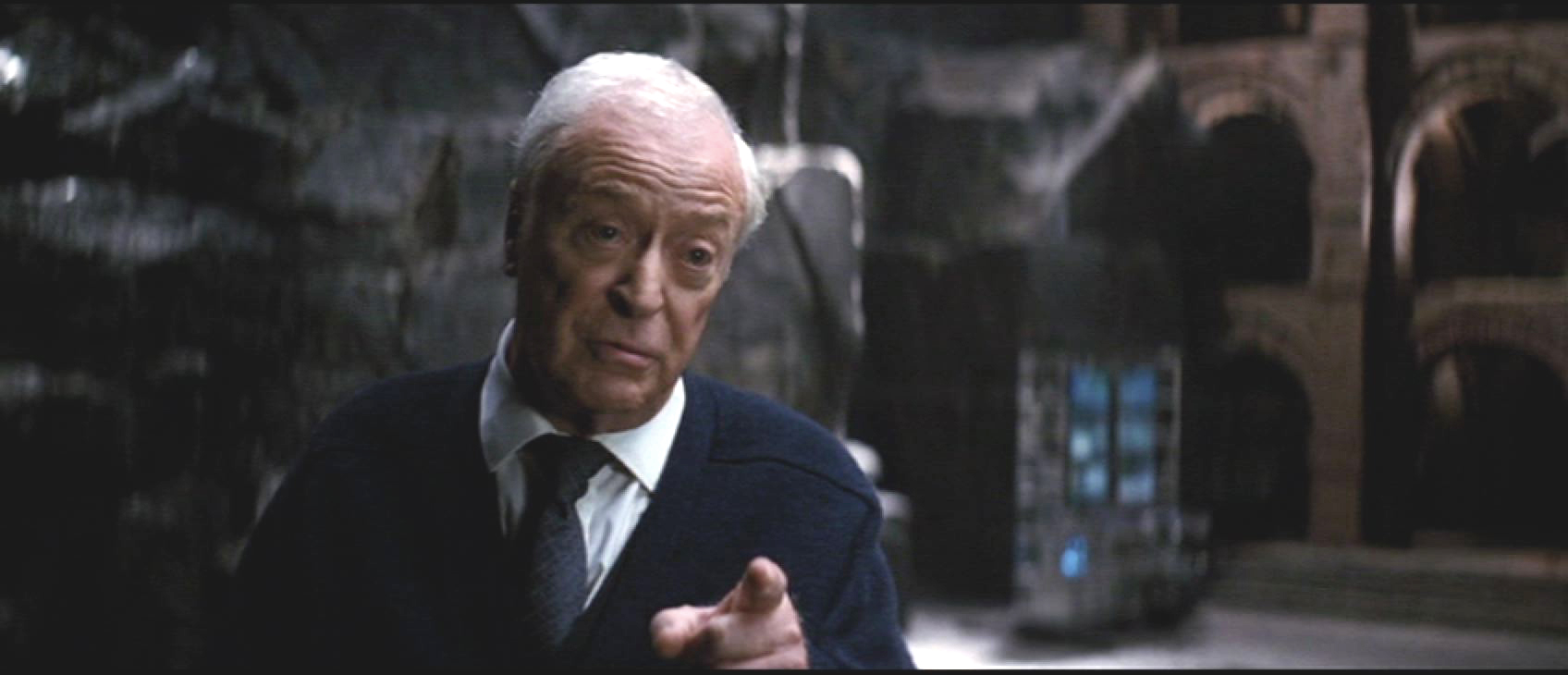Back in Part One, I mentioned that it's worth considering the ensemble characters in a game like this. The reason for that is that your Dark Knight-esque heroes need to have intimate characters in their lives that they can talk to. Dialogue is the only elegant way of seeing the inside of a character's mind at the roleplaying table without resorting to things like an INSPECTRES-style monologue -- but that breaks us out of the realistic mode we're trying to set with a game like this.
After all, what would Batman be without his Alfred? Having a mentor / best friend who stands by the hero throughout her ordeals and acts as a sounding board for their problems is essential. Lovers and allies are important too, because they're the ones most likely to be asking difficult questions of the hero, like Dig and Felicity do to ARROW's Oliver Queen. (Well, Felicity and Ollie aren't an item yet. But give them time.)
It's worth noting here that although it's a superhero trope that we're all familiar with, I don't recommend using the extended cast as easy pickings to be made hostages or victims by the hero's Nemesis. This is something that's been overplayed in roleplaying games, to the point that many players are wary of having their characters make any intimate connections at all. If you threaten their supporting cast, you need to do it very sparingly if at all.
And for those of us familiar with high trust, high drama play, they can apply all kinds of pressure on the hero just by being a part of their life. Sticks and stones may break your NPCs' bones, but words will hurt the PCs like a sonofabitch. The supporting cast are the ones who will be expressing doubts about the necessity and methods the hero takes on. They'll be the ones begging them to just walk away, come back to a normal, safe life. They'll be the ones saying they can't do this any more, can't watch them destroy themselves, can't pull one more bullet out of their shoulder.
Now that's painful, if you've done a good job of giving the hero friends and lovers that they actually like and want to hold on to.
One last thing to consider, for your Nolanverse-inspired game, is what rule system to use. Although I've mentioned SMALLVILLE here, and it would be perfect for the interpersonal stuff, I don't think it's quite gritty enough for the Nolanverse. The same goes for MUTANTS & MASTERMINDS, although it gets top marks for being able to model the best Batcave and Batmobile of any supers game I'm aware of.
Long time readers will be unsurprised to learn that I think WILD TALENTS would be tops for this. WT is as gritty as you'd want for the material, absolutely -- this is a system where you can definitely be badly injured and have that injury stick around for a while. The "only roll when it's important" ethos would lend itself well to a game where you want to encourage interpersonal drama, as well.
It's the Will / Motivation system that would make WT shine for a Nolanverse game, however. Simply put, heroes have a reserve of Will points that powers their super abilities, even if they're just exceptional (but mortal) fighters. That Will can be used to mitigate injuries and drive them to succeed against the odds, but it's a finite and fluctuating resource. It can be sapped by interpersonal strife or villains who threaten the hero's values as much as their physical wellbeing.
For those of us who want a supers game full of high emotional stakes, that's GOLD. (And, to be fair, they do say right in the book that they're aiming to do stuff like The Dark Knight out of the box, so props to them. Would I use WT to do Iron Man or The Avengers? Maybe not.)
Enough talk. There's the Bat Signal, shining on Gotham's twin towers.
Time for action.



No comments:
Post a Comment